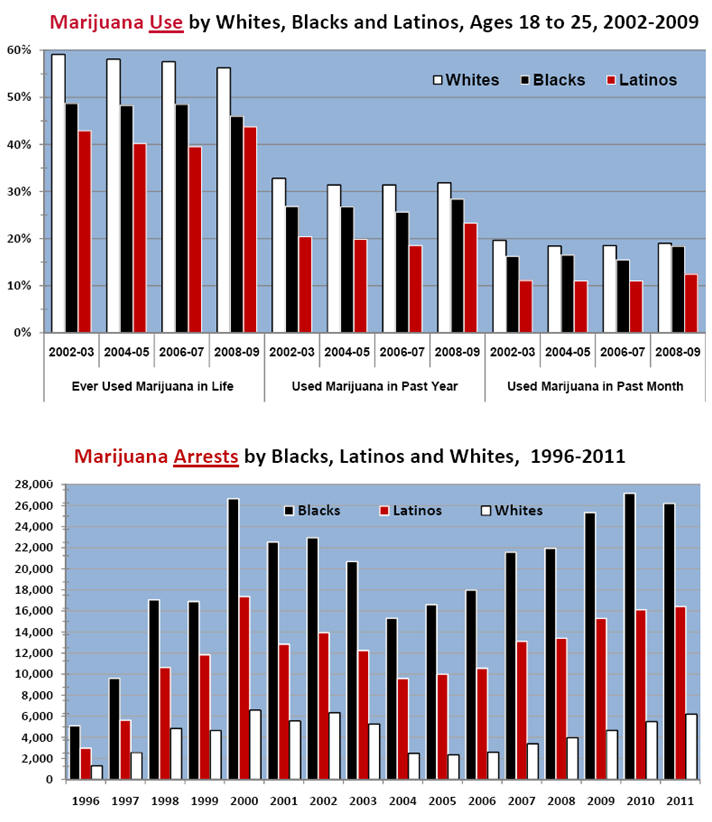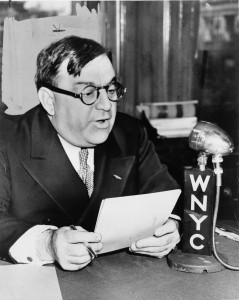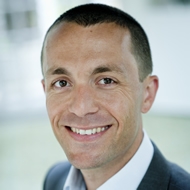Stop-and-frisk as a policing strategy is driven in large measure by marijuana arrests in New York City. In New York, much of drug policy reform efforts has been around transforming policy around marijuana arrests.
At the moment, International Drug Policy Reform Conference is coming to a close in Denver, Colorado. The conference brings together academics and activists working to reform drug policy across the globe. While at the conference, I had a chance to interview two people who personify academic-activist partnerships around the connection between stop-and-frisk and marijuana arrests.
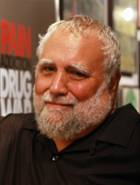 Professor Harry Levine (CUNY-Queens and the Graduate Center, Sociology) is the leading expert on the racial disparities in marijuana arrests. He holds Ph.D. in Sociology from the University of California, Berkeley, and his B.A. from Brandeis University. His work has received seven distinguished scholarship awards for historical and sociological research about addiction, alcohol prohibition and regulation, international drug policy, crack cocaine, the war on drugs, and racial bias in marijuana possession arrests. In 2013 he was awarded a Senior Scholar Distinguished Achievement Award from the Society for the Study of Social Problems.
Professor Harry Levine (CUNY-Queens and the Graduate Center, Sociology) is the leading expert on the racial disparities in marijuana arrests. He holds Ph.D. in Sociology from the University of California, Berkeley, and his B.A. from Brandeis University. His work has received seven distinguished scholarship awards for historical and sociological research about addiction, alcohol prohibition and regulation, international drug policy, crack cocaine, the war on drugs, and racial bias in marijuana possession arrests. In 2013 he was awarded a Senior Scholar Distinguished Achievement Award from the Society for the Study of Social Problems.
gabriel sayegh is State Director, New York, Drug Policy Alliance, which he joined in 2003. sayegh and his team work in New York City and across the state, partnering with 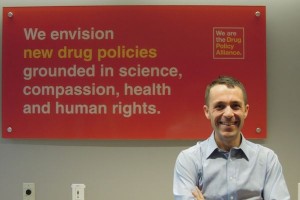 community organizing groups, human service agencies, and researchers to advance drug policies that are guided by science, compassion, health, racial justice and human rights. Recent successes include reform of New York’s draconian Rockefeller Drug Laws and the passage of historic legislation to prevent accidental overdose fatalities.
community organizing groups, human service agencies, and researchers to advance drug policies that are guided by science, compassion, health, racial justice and human rights. Recent successes include reform of New York’s draconian Rockefeller Drug Laws and the passage of historic legislation to prevent accidental overdose fatalities.
Jessie Daniels: Can you share a little bit about how you two came to be involved in the issue of marijuana arrests and how it is related to “stop-and-frisk” in New York City?
Harry Levine: I’ve been researching and writing about (and against) the drug war since the mid 1980s, always trying to find ways of affecting national debate and news. In 2005 I began researching the huge numbers of marijuana possession arrests and their racial bias in New York City. In 2008 the civil rights attorney Deborah Small and I released a 100 page report through the NYCLU — called “Marijuana Arrest Crusade: Racial Bias and Police Policy in New York City.” It was based on two years of partly-funded research including attending national black police conferences and obtaining marijuana arrest data from New York State and the FBI. That report made a brief splash but no follow up. A year later I received a bit more funding so I could teach part time and work on this project and began my terrific partnership with Loren Siegel, formerly director of public education for the ACLU. Gabriel came to us immediately, encouraged, seduced, and tricked us into writing an “update” about marijuana arrests. Jim Dwyer of the New York Times eventually turned a bit of it into a fabulous column headlined “Whites Smoke Pot, but Blacks Are Arrested.” And THAT made a splash. Gabriel then encouraged and seduced Loren and me again and again to dig up more data and write about it, and he created brilliant press releases, wrote articles themselves, and and Tony Newman pitched the pieces to get them in the hands of newspaper reporters, wire service reporters, the NY City Council, members of the NY State Legislature, and even the national press. I’d known Ethan Nadelmann for 20 years and Tony and Gabriel from when they were puppies, but we never worked together like this before. It was and remains a joy to do so and they’ve accomplished soooo much.
By the way, and as Gabriel is likely to say, the marijuana possession arrests in New York and nationally are a by-product or “fruit” of police stops and searches (often illegal searches). And the vast majority (77%) of those arrested for marijuana are young people in their teens and twenties. Although young whites use marijuana more than young blacks and Latinos, throughout the U.S. blacks and Latinos are arrested at many times the rates of whites because they are stopped and searched much more often than young, whites, especially the many middle-class and wealthier whites.
gabriel sayegh: The only thing I would add to in Harry’s response is that while my office wrote all our press releases they were based on Tony ’s winning formula. Tony Newman, the Director of Media at DPA, then helps to finalize the headlines and most importantly – he works his magic to pitch the stories.
In the mid 2000’s, a guy named Bruce Johnson at NDRI had published a series of academic papers about the marijuana arrests in New York City. Between that and the FBI data about the arrests in NY, we were generally aware of the problem. But it wasn’t until Harry and Deborah published their major report in 2008 that the scope of the problem became clear – it was, as Harry likes to say, a scandal. At that time, we were still working on reforming the draconian Rockefeller Drug Laws, and we started doing some field preparation for a campaign on the marijuana arrest crusade. It quickly became clear that we simply didn’t have the capacity at that moment to build and launch the type of effort we believed necessary to tackle the issue. After the Rockefeller reforms were passed in 2009, we were able to focus on building a new campaign.
Jessie Daniels: What changes do you foresee with District Court Judge Shira Scheindlin’s recent ruling on this controversial policing practice?
Harry Levine: I think one of the most important things that Judge Scheindlin has done is to provide language for explaining why the extreme racial disparities in stop and frisks (and by extension the marijuana arrests) are bad — meaning morally, ethically, legally bad, wrong, unconscionable and unconstitutional. In a piece coming out soon in The Nation magazine I say the following about the racist marijuana arrests throughout America and quote Judge Scheindlin:
- Marijuana possession arrests are skewed by class, race and ethnicity because police departments systematically “go fishing” only in certain neighborhoods and methodically search only some “fish.” The result has been called “racism without racists.” No individual officers need harbor racial animosity for the criminal justice system to produce jails and courts filled with black and brown faces. However, acknowledging this absence of hostile intent does not absolve policy makers and law enforcement officials from responsibility or blame. As federal Judge Shira Scheindlin recently determined in two prominent stop-and-frisk cases, New York City’s top officials “adopted an attitude of willful blindness toward statistical evidence of racial disparities in stops and stop outcome.” Judge Scheindlin found that high-level officials “turn a blind eye” and show “willful disregard” to the discriminatory effects of their policing policies. She cited the legal doctrine of “deliberate indifference” to describe police and city officials who “willfully ignored overwhelming proof that the [stop-and-frisk] policy…is racially discriminatory and therefore violates the United States Constitution.”
gabriel sayegh: A few years ago, there was a lot of confusion in New York City – among the press, among many advocates, and in many communities — about what the law pertaining to stop and frisk practices. We asked Ira Glasser, president of the DPA board and former head of the ACLU, to give our staff a private presentation on the issue. He taught us about the detailed and incredible legal history of stop and frisk and its connection to marijuana arrests in New York City. The presentation was so instructive and illuminating that we asked him to write it up. We published his analysis and distributed it widely, and document helped us and so many others understand exactly how these issues were connected and why the police stop and frisk practices were illegal.
Judge Scheindlin’s ruling in the Floyd case is huge. If implemented, the oversight and community dialogues required under the ruling could prove transformative. We’re already seeing the number of stops in the city go down, and, along with it, the number of marijuana arrests are also going down.
Jessie Daniels: Some academics might be hesitant to get involved in such a controversial political issue. What do you say to critics who might question your ‘objectivity’ as a scholar?
Harry Levine: Most university professors and administrators understand that being objective, or factual, or accurate is not at all the same as having no point of view. And fortunately my colleagues at Queens College and City University of New York strongly support what I’ve done. And lots of academics do advocacy around criminal justice reform and the drug war — especially in law, medicine, public health, social welfare, criminology, but also sociology, anthropology, history, psychology, economics. even education. And more would like to. One obstacle is that advocacy work requires a different set of skills, knowledge and connections than conventional academic work. And almost no academics have people like Loren, Gabriel and Tony to teach them and work with them. (And perhaps most important, there is no funding to make it happen, but that’s another topic.) I think that as the movements for marijuana legalization, drug law reform, and police and criminal justice reform grow, that more academics will find ways to contribute. It is already happening in New York City and in many other places. I think of it as the huge task of building the institutions and policies for a post drug war America.
Jessie Daniels: It’s fairly unusual for people involved in policy or activism to reach out to academic researchers. Do you have any advice for people who, like you, are working on a social justice issue and want to connect with researchers and maybe don’t know how to do that?
gabriel sayegh: Back in the late 90s, I was doing a lot of activism for just and fair international trade policies, especially in those so-called free trade agreements. I learned pretty quickly that generally speaking, the public wasn’t really enthusiastic to hear about the complicated policy nuances of an international trade deal – it can be really boring stuff, inaccessible to regular folks. But those agreements often dramatically impact our economies and can undermine democracies here and abroad, so we had to find effective ways to understand and communicate about them in the public sphere. Activist researchers and academics helped us decipher some of the economic language in these deals at the time, boiling it down to a few main points. And because of their status as Ph.D.s and such, they could help legitimize our positions in the public discourse. If you’re a rag-tag activist as we were then, the press and public generally didn’t pay attention when we declared that “These kind of trade deals are unfair, unjust.” But when Dr. So and So, who is Professor at some University comes out and says, “This particular thing is unfair,” well, then, it means something different.
I was fortunate to get more serious lessons in working with academics and researchers from two people: Judy Greene and Lorenzo Jones. They showed me how a new report, issued the right way and with the right kind of media plan, can not only earn a lot of press, but also shape the narrative around the issue – sometimes dramatically. Judy is one of the foremost criminal justice researchers in the country. She started a group called Justice Strategies specifically to deploy action-oriented research – good research — in campaigns to change policy and practices in criminal justice and drug policy. Lorenzo is a longtime organizer, advocate and strategist – and a mentor to many folks in the drug policy and criminal justice fields. He’s also one of the most successful policy reformers in any field anywhere in the country – he now directs a group called A Better Way Foundation, based in Connecticut. Lorenzo and his team would take reports issued Judy or academics at one of the local universities and then build an intervention and campaign plan around that report. When I first started working with him, back in 2004, he was engaged in a major campaign to reform Connecticut’s sentencing disparities for crack and powder cocaine. They won that campaign – the first to do so anywhere in the country. They used reports and research to reinforce and strengthen their organizing work and utterly transformed the dialogue and politics around the issue. They deployed academics as experts, creating public contradictions between the experts and the idiotic nonsense of some opponents. The academics and researchers understood their positions in the university or their degrees conferred them a particular kind of social capital, and they were playing a role – as themselves, as academics, as experts operating as part of a broader campaign. Judy and Lorenzo showed me what could be done with a partnership between researchers and advocates.
I’ve learned that many academics want their research and intellectual work used beyond the academy. I don’t know if there’s a special trick for organizers to connect with these researchers, but they’re not that hard to find if you look for them. Many of these folks go to advocacy conferences or write articles for the general public. The one suggestion I offer is this: remember that little things can have a big impact. You don’t need a 100 page report to get press. You just need a few pages on a topic, cut in a new way, so reporters can write about it. Literally, a few pages authored by an academic can be called a report and you can build a whole release plan around it. Academics often fret about this, maybe because they don’t work in a world where a two or four-page document is sufficient. But if you can get them to do it, you can leverage their position as an expert to advance your cause. I admit it’s not always easy working with academics – Harry and I have gotten into our fair share of arguments – but it’s certainly worth it. We’ve done this over and over again in New York with Harry and Loren’s research. Our campaign has transformed the overall narrative about marijuana arrests in New York– those research, deployed effectively, actually shapes how people perceive and think about the issue. That’s huge.
Jessie Daniels: Another focus for us at JustPublics@365 is re-thinking how we measure ‘scholarly impact,’ and in the digital era there’s talk of ‘altmetrics’ or alternative metrics. That just means counting things like downloads instead of, or alongside of, the traditional measures of citations in peer-reviewed journals. How do you measure success when you’re working to change drug policy?
Harry Levine: When I first got involved in doing this public advocacy work I was told that the gold standard of impact was getting cited in an editorial in the New York Times. In 2008 we got cited in a Times editorial and in lots of news coverage — but we could not get even a little funding which is a much bigger problem than any problems within academia.
“Metrics” might matter if foundations were funding this kind of work. But they’re not. Academics have full time jobs, like plumbers and cardiologists. This kind of advocacy (which is not academic work) takes time away from teaching and academic projects; and it takes money to pay for research help, data analysis, and for writing, formatting and editing public reports (which are not the same at all as academic publications). Foundations like Ford are willing to fund, say, re-entry from prison programs. But almost no large foundations offer support for work like we’ve done — collecting data to expose routine police, prosecutor and court practices and then writing public reports publicizing what we’ve found. And the bit of available subsistence funding is targeted at service and community-based groups and not academics.
Until recently many liberals (including at foundations) have been allergic to research and advocacy that confronts the moral, economic and social catastrophe called “The War on Drugs.” This is, after all, a huge government program strongly supported by enormous organizations of police, prosecutors, and many elected officials. We reformers will succeed, but It will take a lot to bring the drug war down. The lack of funding for basic expenses in doing this work (research, travel, data analysis, time) is probably a bigger obstacle than anything; I think the leadership of all criminal justice and drug policy reform groups would say that.
gabriel sayegh: There’s a group out of USC – USC Program for Environmental and Regional Equity (PERE) — that issued a report a few years ago about metrics. They separated transactional metrics – like getting your bill passed – from transformational metrics, such as deepening the understanding of an issue among your members. We’ve gotten literally hundreds of media hits on the marijuana arrest campaign – that’s a transactional metric, we can count those media hits. But we’ve also changed the way this issue is reported on in the media – when we first started the campaign, the media, if we got any, would be dismissive: “Oh, the hippies don’t want to get arrested any more for weed.” But now, the issue is taken very seriously overall, by the NY Times, by the state legislature, by the Governor – they all acknowledge that this is a problem of racial bias, police lawlessness, fiscal waste. That’s a transformational change. The PERE report is among my favorite tools for movements to think about metrics because it’s fairly accessible and applicable to social change work. We use PERE’s metrics outline to inform our objectives and to evaluate our progress and determine success in the marijuana arrest campaign and our other campaigns. It’s a work in progress – we’re always learning how to do it better – and I’ve found it enormously valuable. I was recently talking with a foundation director who said she liked the PERE framework of transactional and transformational metrics, but many of her staff thought the transactional metric were too, I don’t remember exactly how she said it, something like wishy washy. But if we only pursued transactional metrics, we may end up just changing a policy — a transactional change – without developing an understanding of the systemic problems that often give rise to bad policies — a transformational change. I think both are essential, together.
There’s a dynamic relationship between them, and if we only pursue either transactional or transformational goals, then we’re probably not going to be all that effective overall, since the big-picture objective, at least for us, is social change.

